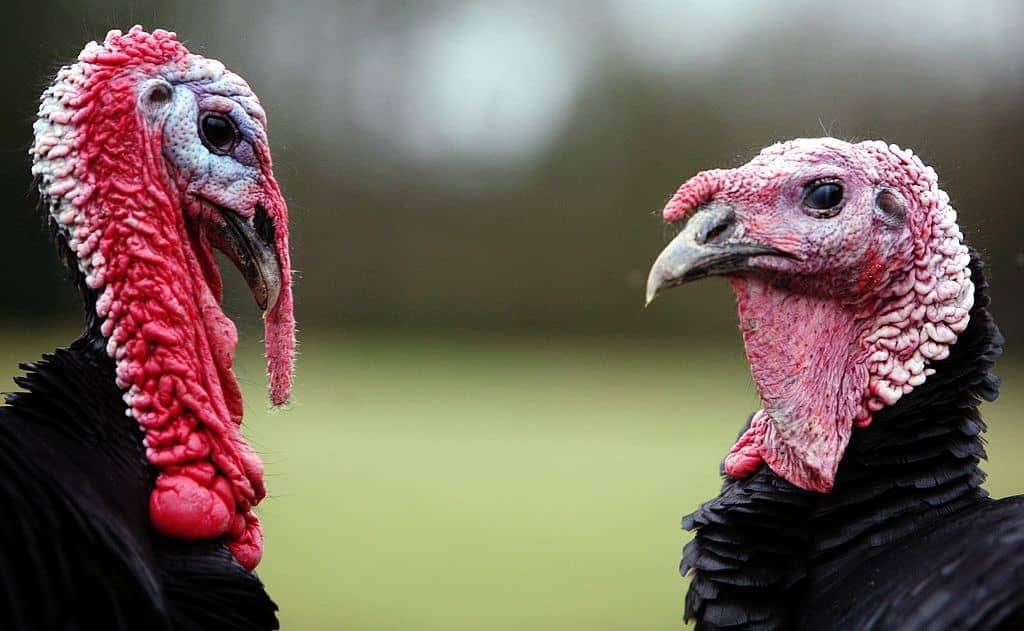When I recently asked younger work friends about the prospect of turkey for Christmas dinner, it was greeted with grim fatalism. Nobody said that they liked it (though the accompaniments and the leftovers got some enthusiastic thumbs up). One cosmopolitan European colleague even said she felt like ‘the Grinch who stole Christmas’ after suggesting to her horrified British in-laws that they have goose instead.
For how much longer will the tradition of eating turkey last? A sense of heritage keeps it, for now, on the Christmas table, particularly in rural Britain. But our cities are younger, more multicultural, and it isn’t uncommon today for some families to have turkey alongside dishes from other national traditions, or eschew it altogether.
Then there are, of course, a growing number of vegans and vegetarians in a generation horrified by the thought of tortured farm animals and the prospect of environmental catastrophe. For some, eating any kind of meat is déclassé, and a meat that has been tainted by the Turkey Twizzler scandal seems particularly uncivilised.
A hundred years ago, only cranks ate nut roast on Christmas Day, but that’s no longer the case. Many youngsters will be having vegetarian Christmas dishes alongside their parents’ and grandparents’ meaty ones. Over time, the proportion of wholly veggie Christmases will increase, as more and more people take up vegetarianism or veganism. Today, the proportion of vegetarians and vegans is growing fastest among the under-25s, and the number of vegans in Britain has quadrupled in recent years. This trend hasn’t gone unnoticed by recipe writers and food manufacturers, who are expanding options away from the classic nut roast, with dishes such as the vegeducken, the beefless Wellington, and the Tofurkey roast.
We were a nation of roast beef worshipers until Charles Dickens’s A Christmas Carol
Turkey is also out of step for another reason. Take Mrs Beeton’s rapturous description of the Christmas table:
‘We can hardly imagine an object of greater envy than is presented by a respected portly paterfamilias carving, at the season devoted to good cheer and genial charity, his own fat turkey, and carving it well.’
You can imagine that the paternalistic hierarchy implicit in carving a turkey doesn’t play well with millennials. I have a theory that one reason Rukmini Iyer’s Roasting Tin recipes are so popular is not just that they are easy and delicious, but that there is something reassuringly egalitarian about a dish where the cook has already cut everything up, everybody gets the same, and nobody has the anxiety of carving and distributing the results.
At a dinner recently held at St John, that temple to meatiness, guests were asked what current habit would seem unthinkable to future generations. ‘Eating meat,’ the table cried in unison as we tucked into lamb chops. Will anybody be eating a conventionally slaughtered turkey in the future? Even in the 1950s Churchill predicted that:
‘We shall escape the absurdity of growing a whole chicken in order to eat the breast or wing, by growing these parts separately under a suitable medium.’
Science is already beginning to bring lab-grown meat ever closer to our plates.
Why do we have turkey at Christmas anyway? Britain adopted it enthusiastically after its introduction from the Americas in 1524 (possibly via the eastern Mediterranean, which accounts for its name). It adapted well to farmyard life and was deemed a ‘lesser land fowl’, meaning that it was not a game bird and therefore not in the top tier of status foods. Although perfectly acceptable to the aristocracy (a cheffy 1660 recipe book has it roasted and stuffed with cloves, as a first-course meat dish), it was on the tables of the middling sort, the yeomen and farmers, that it had most value. The meat feasts of the European Christmas and American Thanksgiving are in November and December, when animals were well fed from the autumn bounty; and some had to be slaughtered so they didn’t compete with humans for scarce grain over the winter.
We were a nation of roast beef worshipers until Charles Dickens’s A Christmas Carol. Like many working-class Victorian families who paid a small weekly sum into a ‘goose club’ to guarantee their Christmas dinner, the impoverished Cratchit family sends a goose to the communal bakery oven. The reformed Scrooge presents them with a luxuriously middle-class turkey. ‘A Christmas dinner, with the middle classes of this empire, would scarcely be a Christmas dinner without its turkey,’ said Mrs Beeton a couple of decades later.
Post-war methods of breeding and farming brought the Christmas turkey within reach of more families than ever. Goose doesn’t take kindly to intensive rearing and eventually it swapped places with turkey on the social ladder. Goose became chic (and expensive) while the turkey continued to be middle-class — and that is not always the best PR for foods (ask the avocado). I know of families who view the turkey as a parvenu from America; and others who feel it is a little too, well, common.
Turkey is the last bastion of seasonal eating, when we can get asparagus and hot cross buns year round. Of the 15 million turkeys slaughtered in the UK today, nine million are eaten at Christmas, though these figures have more than halved in the past 25 years. For many people, particularly on lower incomes, it remains a yearly treat. There is something about the commonality of turkey which is cheering: most families who celebrate Christmas will still sit down to the same meal on that one day of the year. This is quite an achievement for a nation in which food divides as much as it unites. But whether we will be doing the same in the coming decades seems doubtful.
What am I having for Christmas dinner this year? Not turkey — but I take my leave of it with both relief and regret.






Comments